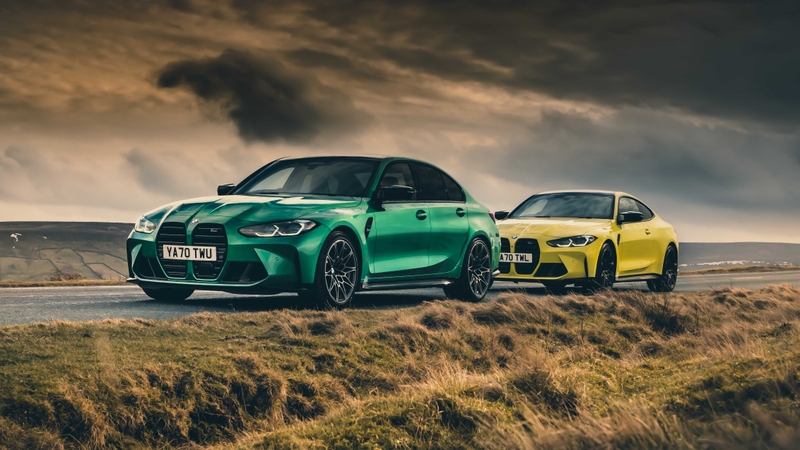
Used BMW X1 (2015-2022) interior, tech and practicality
Gallery
Comfort and visibility
If you’ve had experience of any BMW in the last 20 years or so, the X1’s interior will be instantly familiar. The dashboard doesn’t have the ultra-modern look of the Audi Q3 or Mercedes GLA, but its bank of physical controls make adjusting settings easy. There are physical climate control dials and buttons, and a second row of buttons numbered 1-8.
You might not use these if you don’t know what they’re for – they’re not for dialling a phone number but, instead, they’re configurable shortcut keys to make the interior as user-friendly as possible. Visit the menu screen you want to get to – whether that’s a certain radio station, navigating to a specific address you visit frequently, or toggling the split-screen display on and off – and long press the shortcut button you want to allocate it to.
The materials used are generally high quality, and the ones that are a bit cheaper are designed to look like more expensive choices. All in all, the interior feels premium, and it’s certainly clear why you’re paying more for the X1 than something like a Nissan Qashqai or Ford Kuga. We like the array of textures you get, such as the glossy black plastic, the tactility of the leather grain, and the contrasting bits of trim that ensure the interior doesn’t feel dull or drab.
While seats are entirely subjective, it seems that many X1 owners find the sports seats in M Sport models to be more comfortable than the normal seats fitted in lower-spec models. Sitting high up, you get a good view of the road ahead – and, actually, all-round visibility is pretty good with the X1’s big windows.
Standard equipment
Four trim levels are available for used BMW X1 buyers. SE is the entry-level option, although it still boasts a lot of kit and upgrades on higher-spec models are largely cosmetic. Standard equipment includes a powered tailgate, two-zone climate control, rear parking sensors, auto wipers and headlights, and 17-inch alloy wheels.
Sport sits on 18-inch wheels and adds ambient lighting and visual tweaks, plus eye-catching red interior trim on pre-facelift models.
xLine is a good pick for used buyers, as it also includes LED headlights and leather upholstery with front seat heaters, and stands out with a more 4x4-inspired styling pack. LED headlights became standard-fit across the range after 2019.
Top-spec M Sport features the usual racy touches – reprofiled bumpers, M badges and body-coloured wheel arches – plus sports suspension and some suede-like upholstery.
Infotainment and audio
Besides earlier X1s with a smaller 6.5-inch screen, most X1s feature a large, rectangular touchscreen, measuring either 8.8 or 10.1 inches across. While the smallest screen still features built-in sat nav and DAB radio, it doesn’t look particularly premium and the screen’s relatively compact size means it looks quite busy and cluttered.
There are a huge array of menus and features within BMW’s iDrive infotainment system, but the iDrive controller makes it easy to whizz through the screens without having to use the touchscreen. The circular dial between the front seats can be pressed, scrolled and tilted, and it’s surrounded by a handful of shortcut buttons that get you to the main functions with just a click.
Cars with the optional Technology Pack get a head-up display and BMW Navigation Plus, which lets you send sat nav directions from your phone to the car’s screen, among other things. This means you can get in the car with the sat nav already preloaded to show your destination and route. Otherwise, Apple CarPlay is standard, so iPhone users can use real-time navigation through their phone, but there’s no Android Auto, disappointingly.
Rear seat space
The X1 doesn’t take up much more space on the road than a BMW 1 Series, but it’s massively more practical. Rear legroom is very impressive, and the X1’s height not only gives you a higher driving position but generous headroom, too. A pair of six-foot-tall adults can comfortably sit behind one another, and three adults can squeeze across the back row without too much complaint – even if the transmission tunnel robs middle-seat footroom. It’s certainly more practical than you might expect from one of BMW’s smallest SUVs.
The doors open wide and the Isofix points are accessible, so it’s easy to get young children – and their car seats – in and out. As an added bonus, the front seatbacks are made of hard plastic, which should be much more durable than cloth when it comes to muddy feet and sticky spillages.
All the car’s door bins can hold a one-litre bottle of water and various odds and ends. There’s also a storage net on the seatback and a fold-down centre armrest with additional cupholders. Rear-seat passengers also get USBs and air vents.
Boot space
The boot is similarly well thought-out. You get 505 litres of space to fill, which is on a par with the 3 Series Touring, and the space is wide, long and flat. There’s no load lip, either, although the X1’s SUV body shape means you might have to lift items higher than you would in the 3 Series. There are a few useful hooks, a couple of deep side compartments and a 12V socket.
While plug-in hybrid X1s miss out on much of the underfloor storage area, you should still have room to stash away a charging cable or small valuables. And the 450-litre boot space is still family-friendly.
The rear seats fold individually for maximum versatility. Folded down, the X1 offers 1,550 litres and 1,470 litres for petrol and hybrid models respectively. Practicality is even more impressive if you find an X1 with the optional fold-flat front passenger seat, which lets you carry massive items in this relatively compact SUV.
Up front, the glovebox is wide and deep but a little slim, and there are a couple of lidded storage areas to hide clutter.















































